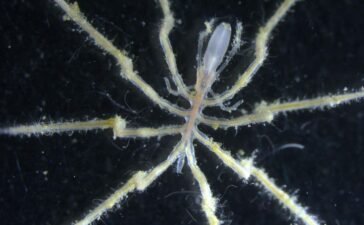A glob of jelly can play Pong thanks to a basic kind of memory


Pong is a simple video game
INTERFOTO/Alamy
An inanimate glob of ion-laced jelly can play the computer game Pong and even improve over time. Researchers plan further experiments to explore whether it can handle more complex computations and hope it could eventually be used to control robots.
Inspired by previous research that used brain cells in a dish to play Pong, Vincent Strong and his colleagues at the University of Reading, UK, decided to try playing the tennis-like game with an even simpler material. They took a polymer material containing water and laced it with ions to make it responsive to electrical stimuli. When electricity is passed through the material, those ions move to the source of the current, dragging water with them and causing the gel to swell.
In an experiment, the researchers used a standard computer to run a game of Pong and passed current into different points on the hydrogel with a three-by-three grid of electrodes to represent the ball moving. A second grid of electrodes measured the concentration of ions in the hydrogel, which was interpreted by the computer as instructions on where to move the paddle to.
The team found that the hydrogel could not only play the game, but that, with practice, its accuracy improved by up to 10 per cent and the length of rallies increased.
The hydrogel swells faster than it shrinks, while its rate of swelling slows even as the electrical current remains constant. The researchers say that these properties create a rudimentary sort of memory, as signs of the swelling remain recorded in the gel.
“Instead of it just knowing what’s immediately happened, it has a memory of the ball’s motion over the entirety of the game,” says Strong. “So it sort of gains an experience of the ball’s general motion, not just its current position. It sort of becomes a black-box neural network that has a memory of the ball’s behaviour, how it behaves and how it moves.”

A polymer gel sandwiched between electrodes that supply current and measure ion levels
Vincent Strong et al. 2024
Strong says the hydrogel is vastly less complex than neurons in a brain, but the experiment proves it is capable of similar tasks. He believes it could be used to develop new algorithms for normal computers that achieve tasks using the bare minimum of resources, allowing more efficient problem-solving. But it could also be an analogue computer in its own right.
“I won’t rule out having a hydrogel thing inside the brain of robots,” says Strong. “That sounds cool, and I’d like to see it. Although, the practicality… we don’t know yet.”
Topics:
You Might Also Like
Polycystic ovary syndrome may be passed on via chemical tags on DNA
Illustration of enlarged ovaries in someone with polycstic ovary syndromeScience Photo Library/Alamy Polycystic ovary syndrome may be passed down through...
X-ray boosting fabric could make mammograms less painful
Mammograms can be painful, but they may not need to beDaria Artemenko/Alamy Getting an X-ray can be uncomfortable – you...
Women’s pelvises are shrinking – how is that changing childbirth?
Medical advances have changed childbirth – potentially enough to impact human evolutionFatCamera/Getty Images Women’s pelvises have become narrower over the...
Sea spiders ‘farm’ methane-eating bacteria on their bodies
Sea spider from the genus SericosuraBiance Dal Bó Spider-like creatures living near methane seeps on the seafloor appear to cultivate...









